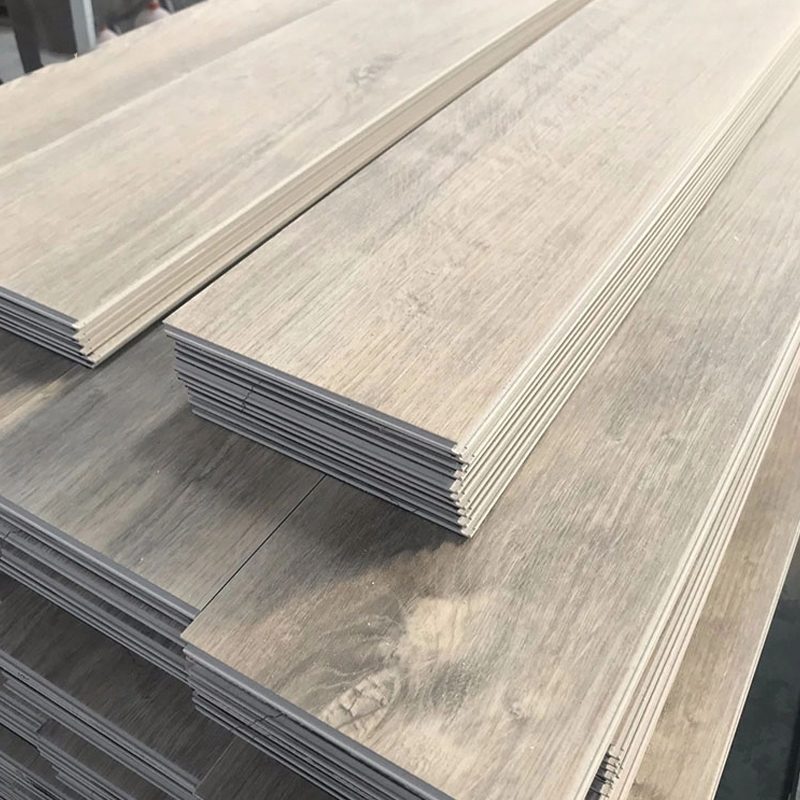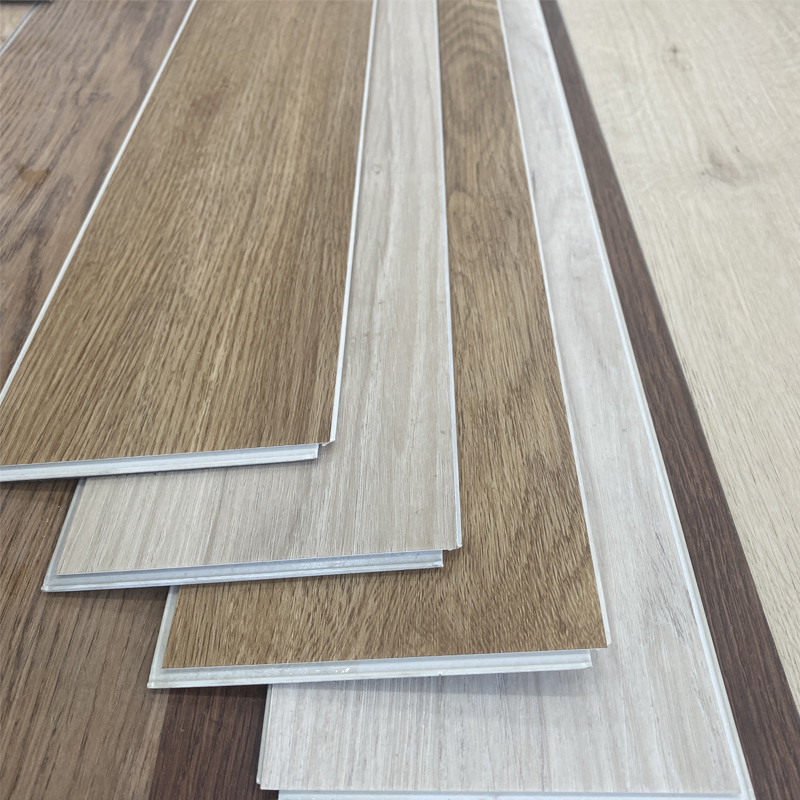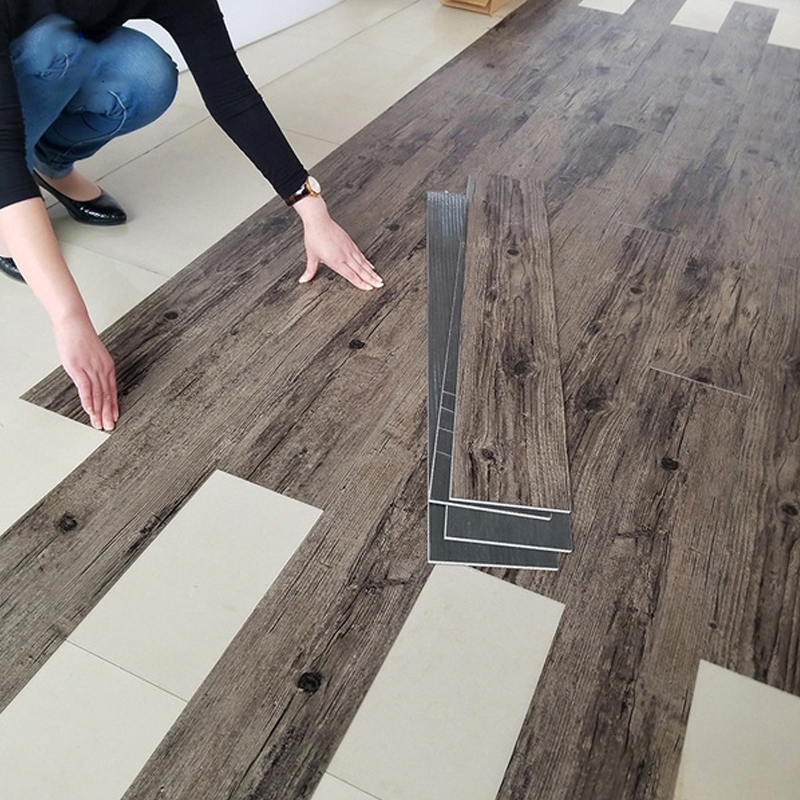SPC flooring, the full name is Stone Plastic Composite Flooring, is a new type of environmentally friendly flooring material. It is composed of multiple layers of materials, the main material of which is stone-plastic composite core board. SPC flooring combines the advantages of stone plastic flooring and composite flooring, and has high durability and stability.

The appearance of SPC flooring is very similar to traditional wooden flooring, with a wide range of pattern options, including wood grain, stone grain, etc. It can simulate the textures and colors of various natural materials very realistically, giving people a natural and comfortable feeling.
The core material of SPC flooring is stone-plastic composite board, which is composed of natural stone powder, PVC resin and stabilizer. These materials are hot-pressed at high temperatures and have very high density and strength, making SPC floors very wear-resistant, pressure-resistant and water-resistant. It can withstand the wear and tear of daily use and external impacts, and is difficult to be scratched or damaged.
Compared with traditional wooden floors, SPC floors are more stable. Its stone-plastic composite core board can effectively prevent floor deformation and shrinkage, and has better compatibility with humid environments. Therefore, SPC flooring can be used in humid environments, such as bathrooms, kitchens, etc.

SPC flooring has many advantages, making it one of the increasingly popular flooring materials.
First of all, SPC flooring has a variety of appearance options, which can easily simulate various materials and patterns, such as wood grain, stone grain, ceramic tile grain, etc. This allows SPC flooring to have a wider range of choices in decorative styles and designs, while also providing more flexibility for floor decoration in homes and commercial spaces.
Secondly, SPC flooring is very durable and stable. Its stone-plastic composite core board and special coating technology make SPC flooring extremely resistant to wear, staining and fading. Its stability is also very superior and can alleviate the shrinkage and deformation of the floor, so it is very suitable for use in humid rooms or high temperature environments.
In addition, SPC flooring also has good sound insulation effect. Because its stone-plastic composite core board is high-density, it can effectively reduce floor noise and vibration, making the room more comfortable and quiet.
Finally, SPC flooring is also a very environmentally friendly flooring material. Because it uses PVC resin, it does not contain formaldehyde, benzene and other harmful substances, and follows global environmental standards. At the same time, it can also be used for a long time, reducing unnecessary impact on the environment.
In addition, the installation of SPC flooring is relatively simple and convenient. It uses a simple click system that can be easily spliced together without the use of glue or other fixing tools, reducing construction time and costs.

When installing SPC flooring, making sure you follow these steps will help you get the job done smoothly:
Preparation:
Make sure the floor is smooth, dry and clean, removing any dirt, oil or other debris.
Install moisture-proof membranes or acoustic pads as needed to increase floor stability and reduce noise.
Prepare appropriate tools such as saws, rubber hammers, rulers, screwdrivers, etc.
Measuring and cutting:
Use a ruler and saw to measure the SPC flooring and cut to size as needed.
Make sure the edges of the floor are flat to ensure a tight connection when installed.

Start the installation:
Starting in the corner of the room, lay the first piece of SPC flooring along the edge of the wall.
Install starting steel plates on the short ends of the floor to ensure the floor starts correctly.
Use a rubber mallet to lightly tap the flooring so that it lines up with the edge of the previous piece of flooring and connects tightly.
Connect the floor:
When installing the next piece of flooring, insert it into the groove of the previous piece of flooring at an angle.
Treat corners and doorways:
Use a saw where needed to cut the flooring to size to fit around room corners and doorways.
If necessary, floor accessories such as skirting can be used to beautify and protect the edges of the floor.

Finish the work:
After you have finished installing the flooring, do a final check to make sure all flooring is installed correctly and connected tightly.
Clean the work area and put away all tools and materials.
The above are the general steps for installing SPC flooring. Each brand and model of SPC flooring may have some slight differences, so before starting installation, be sure to read and follow the relevant installation instructions. If you get stuck or need help, don’t hesitate to consult a professional flooring installer.

In short, SPC flooring is a fashionable, environmentally friendly and durable flooring material. It has the advantages of rich appearance options, strong durability, good stability, and good sound insulation effect. Whether it is a family home or a commercial space, SPC flooring is an ideal choice.


